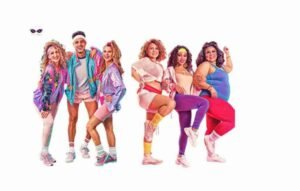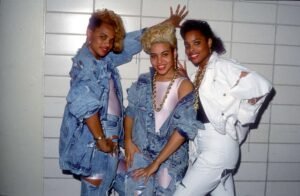The Vibrant World of 80s Fashion
The 1980s was a decade marked by bold choices, vibrant colors, and distinct styles that reflected the dynamic cultural shifts of the time. Fashion in the 80s was characterized by a spirit of experimentation and individuality, influenced by music, movies, and a growing sense of consumerism. The decade saw the rise of diverse trends, each with its unique flair, creating a mosaic of styles that continue to inspire designers and fashion enthusiasts today.
The Influence of Music and Pop Culture
Music played a significant role in shaping 80s fashion. The emergence of MTV in 1981 transformed the music industry, making visual aesthetics as important as the music itself. Artists like Madonna, Michael Jackson, and Prince became fashion icons, setting trends that fans eagerly followed.
Madonna’s eclectic style, featuring lace gloves, layered necklaces, and the iconic conical bra, embodied the era’s rebellious spirit. Her ability to constantly reinvent her look made her a fashion chameleon of the 80s. Michael Jackson’s red leather jacket from the “Thriller” music video and his single white glove became symbols of 80s fashion, merging music and style in an unforgettable way. Prince, with his flamboyant outfits and bold use of color, challenged traditional gender norms and influenced the fashion landscape significantly.
Power Dressing and Corporate Fashion

The 80s was also the decade of power dressing, reflecting the increasing presence of women in the corporate world. This trend was characterized by tailored suits with padded shoulders, creating a strong, authoritative silhouette. Designers like Giorgio Armani and Donna Karan were at the forefront of this movement, offering women a way to assert their power and professionalism through fashion.
The power suit, often paired with a silk blouse and a string of pearls, became a staple in many women’s wardrobes. The look was completed with pumps and a structured handbag, exuding confidence and competence. This trend wasn’t limited to women; men also embraced bold, oversized suits with broad shoulders, often in bright colors or striking patterns, epitomizing the decade’s love for excess.
Casual and Sportswear Revolution
While the corporate world saw the rise of power dressing, casual wear experienced a revolution of its own. The 80s witnessed the birth of athleisure, a trend that combined athletic wear with casual fashion, making sportswear acceptable for everyday use. Brands like Nike, Adidas, and Reebok capitalized on this trend, with their logos becoming symbols of status and style.
Tracksuits, leggings, and sneakers became everyday attire, influenced by the fitness craze that swept the nation. Aerobics, popularized by figures like Jane Fonda and her workout videos, made brightly colored leotards, leg warmers, and headbands fashionable. This trend emphasized comfort and practicality without sacrificing style, a concept that continues to dominate fashion trends today.
The Punk and New Wave Influence
The punk movement, which began in the late 70s, continued to influence fashion in the 80s. Punk fashion was characterized by ripped jeans, leather jackets, band T-shirts, and an overall DIY aesthetic. This rebellious style was a statement against the mainstream, embodying the ethos of anti-establishment.
New Wave, a music genre closely related to punk, also had a significant impact on fashion. The New Wave look was more polished and futuristic, featuring skinny ties, blazers, and asymmetrical haircuts. Bands like Duran Duran and Depeche Mode popularized this style, making it a staple of 80s fashion.
The Rise of Designer Labels

The 80s marked the rise of designer labels as status symbols. Brands like Calvin Klein, Ralph Lauren, and Versace became household names, their logos proudly displayed on clothing and accessories. This trend was fueled by a culture of consumerism and the desire to showcase wealth and success.
Designer jeans became a must-have item, with brands like Guess, Jordache, and Calvin Klein leading the way. These jeans were often high-waisted and tight-fitting, emphasizing the wearer’s figure. The popularity of designer labels extended to accessories as well, with luxury handbags, belts, and even sunglasses becoming important fashion statements.
Iconic Hairstyles and Makeup
Hairstyles in the 80s were as bold and diverse as the fashion. Big hair was the defining feature, with both men and women embracing voluminous, teased styles. Hair spray became an essential tool, helping to maintain the high, gravity-defying looks that were popular at the time.
Perms, mullets, and side ponytails were all iconic hairstyles of the decade. Celebrities like Cyndi Lauper and Pat Benatar sported vibrant, multi-colored hair, adding to the era’s eclectic vibe.
Makeup in the 80s was equally daring. Bright eyeshadows, bold blush, and striking lip colors were the norm. The look was often completed with heavy eyeliner and thick, dramatic lashes, creating a glamorous, over-the-top aesthetic.
Conclusion
The fashion of the 80s was a celebration of excess, individuality, and bold choices. It was a decade where rules were meant to be broken, and self-expression was paramount. The trends and styles of the 80s continue to influence fashion today, proving that the spirit of the decade lives on. From power dressing to punk, the 80s was a vibrant, transformative period in the world of fashion, leaving an indelible mark on the industry and culture.



